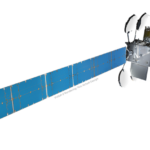
ViaSat Eyes Future Growth in Connecting Commercial, Defense Aircraft
ViaSat estimates an addressable market size for more than 25,000 fixed- and rotary-wing U.S. military aircraft to be equipped with its in-flight connectivity technology in the next several years. The company is well known for its growth in providing in-flight internet to commercial airlines in recent years. However, there are sizable opportunities for equipping defense aircraft in the near term as well, according to ViaSat CEO Mark Dankberg. “Think of the U.S. Defense Department as the world’s largest aircraft operator,” Dankberg told analysts during the company’s second quarter fiscal year 2019 earnings call. “We estimate about 25,000 fixed- and rotary-wing aircraft that are candidates for broadband satellite connectivity. Of those, we estimate about 5,200 we could serve with our current suite of in-flight connectivity products,” he said. Dankberg presented fleet equipage analysis showing U.S. rotary-wing combat aircraft as the highest addressable market in the near term. That segment is followed by U.S. VIP tankers and intelligence, surveillance and reconnaissance (ISR) fixed-wing aircraft. If ViaSat does win contracts for those 5,200 airframes it has identified, it would be an expansion of their existing presence in the U.S. defense segment. In September, the U.S. Defense Information Systems Agency (DISA) awarded ViaSat an eight-year contract to provide U.S. Government Senior Leader and VIP aircraft with in-flight broadband and connectivity services. The award was an extension of the company’s ongoing AMSS IIa contract, which equips select U.S. Air Force and Foreign Military Sale (FMS) VIP and other military aircraft with access to a Hybrid Adaptive Network (HAN) that allows users to seamlessly operate across government and private sector networks. Some of the biggest differences in connectivity needs for commercial and defense aircraft is that airliners fly scheduled routes and more hours per year, said Dankberg. In contrast, the missions flown by defense aircraft are substantially more demanding in terms of how broadband is being used on those flights. On the commercial side, ViaSat estimates demand for 28,000 airliners requiring broadband over the next five years, using projected commercial aircraft sales from Boeing’s 2018 commercial market outlook data. Dankberg said commercial in-flight connectivity services will be the biggest individual driver of financial revenue growth in 2019. El Al Israel Airlines began flying with ViaSat, and Finnair began passenger in-flight testing with ViaSat during the period. The company also won new contracts to equip 100 American Airlines Airbus A321neos, 18 Boeing 737 MAX aircraft for Aeromexico and a new contract for La Compagnie, an all business-class Boeing 757 operator whose only route is New York to Paris. The company also recently picked up major wins in business aviation, becoming the line-fit option on the new Embraer Praetor 500 and 600 aircraft that are scheduled to enter into service by the third quarter of 2019. Dankberg believes a major differentiator for ViaSat in the in-flight connectivity market has been its ability to design and build its own in-flight connectivity, wireless IFE systems and terminals. To enable the type of satellite-based connectivity provided by ViaSat, aircraft need to be equipped with an antenna, power supply, modem, IFEC server and wireless access points. The company’s approach to winning installations on more commercial airliners has focused on establishing enough bandwidth, capacity and speed to enable operators to use business models that give passengers access to the internet on their mobile devices free of charge. “We believe our share has more than doubled in two years to 20% and could grow to over 25% by this time next year. We believe we’ve taken share across the board and while establishing a reputation for performance yielding exciting regional and global growth opportunities. We see more airlines coming to believe that full, fast, and free Internet access is going to be the benchmark and we’re the only service provider that can do that at scale,” said Dankberg.
Gilat Receives Certification for Dual-Band Aero Terminal
Gilat Satellite Networks‘s dual-band aero terminal has passed the standard for the environmental testing of avionics hardware, and received the DO-160 certification. Gilat’s Ku-/Ka-band AeroEdge 6000 is now ready to install in all commercial aircraft. The AeroEdge 6000 is a terminal which can operate in both Ka- and Ku-bands, and aims to provide satellite broadband communication for high-speed internet and multimedia applications for commercial airlines. This terminal could help provide opportunities to High Throughput Satellite (HTS) operators, In-Flight Entertainment and Connectivity (IFEC) service providers, and airlines who want to leverage In-Flight Connectivity (IFC) opportunities with the flexibility to use both the Ku- or Ka-bands. According to the release, Gilat’s terminal is the only open architecture terminal with the ability to switch instantaneously during flight between Ka- and Ku-bands, dependent on capacity coverage and availability. The terminal includes Gilat’s ER 6000-A Ku/Ka antenna, SkyEdge II-c Taurus Modman, Ku-/Ka-band Antenna Networking Data Unit (KANDU) and Wavestream’s Ku-/Ka-band Radio Frequency Units (KRFU). Gilat expects to see the AeroEdge 6000 flying commercially in 2019.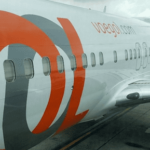
GOL is Gogo’s Connected Aircraft Service Launch Partner
GOL Linhas Aereas will become the launch partner for Gogo’s aircraft data service, wireless quick access recorder (QAR) and automated turbulence reporting in an effort to bring increased access to real-time flight operational information for the Brazilian airline’s pilots and maintenance technicians. Under the new partnership, GOL will use Gogo’s 2Ku satellite-based connectivity service to give its pilots real-time graphical weather updates and transmit critical flight data about systems and components to its maintenance technicians. GOL first added Gogo’s 2Ku connectivity to its fleet of Boeing 737-700s and Boeing 737-800s in 2016. The airline has now installed 2Ku across 91 of its 119 in-service 737s and can enable the use of the wireless QAR, automated turbulence and data service with some re-wiring and software updates. Gogo describes its aircraft data services solution as using onboard aircraft digital flight data acquisition units with active ARINC 717 bi-polar ports transmitting data about aircraft engines, wings and other systems and components to Gogo’s airborne control processor unit (ACPU2). The ACPU2 acquires, records and compresses the 717 data prior to transmitting it to the ground over the 2Ku network. This capability is enabled by ACPU2’s quad-core i7 processors, 2.56 terabytes of solid state drive storage, six MCU ARINC 600 design and 12 different ethernet ports. “This solution eliminates the need for expensive media and manual retrieval from the aircraft; ultimately, improving the timeliness of the subsequent analysis,” Chad Gill, Gogo’s head of product management for connected aircraft services told Avionics International. Gill described the new partnership as a “full fleet deal,” where GOL will be able to make the aircraft data services solution active as soon as the airline’s pilots and maintenance team is ready. The wireless QAR upgrade will require some wiring changes that GOL will work into its fleet “over the next few years,” Gill said. The new partnership announcement with GOL is the latest example of Gogo’s efforts to provide airlines with technology that allows them to go beyond the use of connectivity for internet access by passengers in aircraft cabins. Delta Air Lines pilots for example, have been using using an EFB application to set threat index alerts from existing avionics sensors installed on their aircraft capable of using algorithms developed by the National Center for Atmospheric Research. The algorithms use a combination of aircraft vertical accelerometer data and atmospheric state data, including aircraft-specific behavioral data such as pitch, roll and wind speed to formulate app-based turbulence reports for pilots using Gogo’s in-flight connectivity network. “Gogo is rapidly moving beyond passenger connectivity to connect pilots, flight attendants and the aircraft itself so airlines can access real-time information,” said John Wade, president of commercial aviation at Gogo. “GOL has been at the forefront of technology adoption in the aviation industry; now they will be leading the way in leveraging aircraft data to drive efficiency.” GOL will also be one of many airlines flying with Gogo’s 2ku antenna that will be able to upgrade to lower latency low earth orbit (LEO) satellite connectivity in the future. Gogo CEO Oakleigh Thorne addressed its 2Ku antenna de-icing issues, financial challenges and future business model changes for the company during the company’s second quarter earnings call in August.
Inmarsat Sees Q3 Growth in Aviation
Inmarsat released its results for third quarter (Q3) 2018, and nine months ending Sept. 30 2018. During Q3 2018, overall group revenue (ex. Ligado) was $336.4 million, an increase of $12.6 million from the same period in 2017. Group Earnings Before Interest, Tax, Depreciation, and Amortization (EBITDA), ex. Ligado, increased by $12.7 million to $173.6 million, reflecting higher revenue, particularly from Aviation, and lower costs. Inmarsat’s Aviation segment saw Q3 revenues grow to $68.2 million, an increase of 34 percent compared to the same period in 2017. There was also double digit revenue and EBITDA growth, with an improved margin outlook for Financial Year (FY) 2018. A strategic alliance with Panasonic is helping Inmarsat drive future In-Flight Connectivity (IFC) growth. Inmarsat’s Maritime segment also saw a decrease in revenue — Q3 2018 revenue was $135 million, whereas it was $143 million in Q3 2017. Although Maritime saw strong revenue and market share growth through Fleex Xpress (FX) in the Very Small Aperature Terminal (VSAT) segment, FleetBroadband (FB) revenues declined, reflecting customer migration to FX and increased VSAT competition.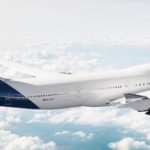
Airlines Look to the Cloud for Responsive Customer Service
It’s no secret that customer experience is a key competitive differentiator within the airline industry. However, delivering on customer demands for more personalized travel experiences and maintaining high levels of customer service are increasingly challenging as the global tourism industry steadily increases and record numbers of travelers take to the skies for the holidays — an estimated 4.27 million forecasted for the U.S. by AAA in 2018. Cloud computing can be a game-changer to help airlines reinvent the customer experience and keep up with these rapid growth levels. During the first wave of cloud computing, the focus across industries – including for airlines — was all about adopting cloud infrastructure to help drive information technology (IT) efficiency and keep costs low. The cloud helped airlines scale their infrastructure more quickly to keep up during peak times and rapidly roll out new apps and services for both passengers and employees. To date, most companies are still in the early stages of their cloud journey, with research showing that only about 10 to 20 percent of systems are on the cloud today. As we enter the next chapter of cloud, airlines have a major opportunity to use the cloud in new ways to deliver even more personalized and responsive customer service. The next 80 percent of the cloud opportunity is about more than just “infrastructure as a service.” It’s about leveraging the cloud to deliver new experiences and drive new growth. The rebooking process is one area where the cloud is already helping airlines transform the customer experience. Adopting cloud helps remove the constraints of existing legacy architectures, platforms, organization, development and operations approaches to help respond better and faster to customer needs. When one of the world’s largest airlines decided to give its customers the ability to take control of the rebooking process via its website, mobile app and self-service kiosks, the company turned to the cloud. Within just a matter of months, the airline was able to launch a new, more dynamic rebooking app across airports, transforming its approach to customer service by providing new levels of self-service for travelers. Beyond enabling travelers to take more control in the rebooking process, the cloud can also help airline employees to deliver improved customer service. For example, Lufthansa Group uses a cloud-based system to empower its flight managers by delivering data aggregated from across multiple systems to employee mobile devices. Traditionally, flight managers have had to login to multiple systems numerous times a day to access information about flight assignments. But equipped with a dedicated app, Lufthansa’s flight managers have better access to current booking and boarding status, baggage status, inbound flights, aircraft and crew rotation, and can respond more intelligently and precisely to passenger needs. The cost of failure is particularly high in an industry that leans so heavily on creating a strong customer experience. Just as flight delays and cancellations are a fact of life in air travel, so is the loss of customer trust and loyalty when airlines mismanage rebookings or poorly communicate itinerary changes. As the industry moves to embrace innovative digital self-service offerings that run on the cloud — and relieve some of the pressure on airline customer service employees — customers must feel confident that interactions with their airline via the cloud will ultimately help get them where they want to go. However, navigating the next phase of the cloud journey requires a new approach. Airlines are often sitting on decades of investment in existing IT systems, and newer technologies such as apps using artificial intelligence (AI) and analytics need to work alongside those legacy systems and applications. A hybrid multi-cloud approach is crucial to integrating these ecosystems into secure, reliable and consistent customer experiences, even though the applications and data might be coming from multiple public clouds, private clouds and legacy systems. Airlines that are able to successfully take a hybrid multi-cloud approach will be best positioned to meet the needs of their customers through deeply responsive customer service, across everything from launching new self-service channels and delivering real-time information direct to the hands of employees to broadening their offerings to include personalized travel packages. John Szatkowski is a global offering leader of travel and transportation at IBM.
First LEO In-Flight Connectivity Demonstration Complete
Gilat Satellite Networks, Global Eagle, and Telesat played a key role in the first demonstration of an in-flight aircraft communicating at broadband speeds with a Low Earth Orbit (LEO) satellite system. The industry milestone was achieved using Global Eagle’s Albatross Onetest aircraft with Gilat’s aero modem and Telesat‘s Phase 1 LEO satellite, launched earlier this year. The testing included a successful demonstration of seamless connectivity and switchover between Telesat’s Geostationary Orbit (GEO) and LEO satellites. Global Eagle is a provider of satellite-based broadband connectivity, television, and entertainment services, content and data analytics to aviation, maritime, enterprise, and government markets “Global Eagle is confident that Telesat’s planned LEO constellation will fundamentally improve the passenger experience for in-flight broadband with industry-leading latency, throughput, and global coverage,” said Global Eagle Executive Vice President (VP) Per Noren. “We chose to collaborate with Gilat on LEO baseband technology due to their proven multi-application platform and clear LEO roadmap.” “Gilat’s solution has now proved its technological advantage of supporting not only multiple applications, satellites, bands and beams, but also a world first transition between satellites in multiple orbits,” said Gilat VP of Mobility and Global Accounts Ron Levin.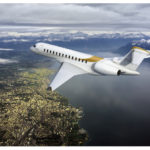
Biz Jet Buying is Trending Favorably for Satellite Connectivity
Over the next five years, 87% of newly purchased business jets are expected to require satellite communications technology to facilitate internet connectivity. According to the 2018 business aviation forecast published by Honeywell Aerospace, business jet manufacturers are projected to deliver 7,700 new aircraft valued at $251 billion over the next 10 years. The forecast includes a survey and interviews with 1,575 non-fractional business jet operators globally that operate 4,400 aircraft — or about 13% of the global in-service fleet. “87% of all dollars will be spent on large cabin aircraft,” Gaetan Handfield, Honeywell’s senior manager of marketing analysis, told Avionics International. The forecast also notes that deliveries of new business jets in 2019 are expected to be higher than in 2018. Handfield said deliveries in 2018 are expected to be flat or lower in comparison to 2017’s 640 deliveries. That increase is driven by new models entering into service in 2018 and 2019, according to Handfield. The majority of the new models entering service this year and in 2019, such as the Pilatus PC-24, Gulfstream G500 and Textron’s Citation Longitude, are all capable of flying international oceanic routes where the only type of connectivity available would come from satellites. Honeywell’s survey also asked respondents about the type of features they want to see on large cabin jets. The results were divided into two categories: operational needs and concerns. On the “needs” category, the majority of respondents seek modern avionics, cruise speeds higher than Mach .85 and extended range. In contrast, the majority of respondents to the operational concerns category want to experience improved fuel economics, high-speed connectivity and optimized aircraft maintenance support. Satellite and air-to-ground connectivity providers have been increasingly diversifying the options available to business jet operators as well. For example, Iridium is starting to add new value-added manufacturers and service providers for its Certus broadband services offering. Certus is the company’s new multi-service communications platform with airplane terminals being supplied by the likes of Cobham, Gogo, Rockwell Collins and Thales, among others. The terminals can operate on legacy Iridium satellites as well as the speedier Iridium Next constellation. ViaSat demonstrated its fourth-generation global aero terminal 5510 at NBAA 2017 with a modem capable of delivering up to 1 gigabit per second (gbps) speeds to aircraft. The California-based satellite service provider is also expected to unveil new connected business jet technology at NBAA 2018. Inmarsat also expects to offer its European Aviation Network (EAN) satellite and LTE-based ground network to business jet operators by January 2019. Air-to-ground 4G LTE provider SmartSky Networks earned its first supplemental type certificate in January and is targeting business jet and commercial operators in the U.S. The Honeywell forecast also reported some interesting regional trends. Handfield noted that purchasing plans for the next five years are higher in North America and Europe, and lower in the Asia Pacific, Middle East and Latin American regions. Purchasing plans in Europe increased significantly, with 33% of the in-service fleet expected to be replaced over the course of the 10-year forecast period. “If we look at last year, I think there was still a lot of Brexit anxiety in the results,” said Handfield, referring to the European respondents. “The economy in Europe is doing a little better than last year, but also I think Brexit negotiations are happening and people are starting to see a better solution on the horizon. I think that helped a lot to improve intentions in Europe especially in England and Germany where purchasing plans were up significantly,” said Handfield.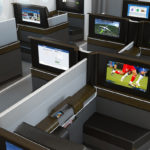
Panasonic Avionics Discusses Cyber Protecting Connected Aircraft

Panasonic Avionics’ eX3 premium configuration with Altus monitors. Photo, courtesy of Panasonic Avionics.
In 2015, cybersecurity consultant Chris Roberts claimed to have hacked an airliner while riding it, drawing the immediate attention of federal authorities while underscoring the need for comprehensive cybersecurity for airliners that even now are becoming more rather than less connected.
Lost in the rush to update legacy aircraft with state-of-the-art avionics and electronic cabin amenities like wireless internet was a focus on securing those systems against intrusion by bad actors.
“Airplanes were never designed to be connected, whatsoever, to the internet,” said Panasonic Avionics Information Security Officer Michael Dierickx. “What we did was make a giant [internet of things] device.”
It is important for passengers to feel safe when they fly, and they are, but safety and security are not the same thing, Dierickx said. Passengers should know the difference and airlines should focus on both, he said.
“It comes to end user training,” Dierickx said. “What the passenger really needs to be aware of is while the airline is offering you a better user experience, there is no difference between that wireless onboard an aircraft and going to a Starbucks. Wireless technology is wireless technology. Passengers will always confuse security with safety. If somebody hacks another passenger on an aircraft, someone thinks that means they can take over a flight-control system — and that’s absolutely false.
Roberts is less confident in system segregation as a safety mechanism and believes flight-critical systems are still at risk of intrusion, interference or disruption. The U.S. Department of Homeland Security has recognized those vulnerabilities and is working to prevent future hacking, he said.
“My concern is still valid,” he said. “There is too much of an attitude that we have segmented it. We have the perception of an air gap, so we should be fine. Nobody has hacked us yet, so why would they now? A lot of industries are realizing it is not the way to go.”
Traditional technology companies deal with a very different regulatory landscape than the one imposed on airlines by the FAA, EASA and other civil aviation regulatory and standards bodies. Aviation companies are forced to merge fast-paced, constantly updating software with hardware that deals in decades-long lifecycles, all while keeping airplanes connected and secure.
If the friction between hardware and software is poorly managed, the consequences are drastic: a relatively minor incident of a hacker exploiting vulnerabilities can cost a company millions. When you’re dealing with planes carrying passengers, serious issues are life-and-death.
Neil Adams, director of national defense at nonprofit defense research-and-development lab Draper, said interception of transmitted data is the most visible cybersecurity threat and therefore receives the most attention.
Ensuring software and upgrades to existing systems are free of bugs or defects also is important. That task is made more difficult when companies employ commercial off-the-shelf (COTS) products and customize them for their use, a fast and easy way to keep up with technology advancements at low cost, Dierickx said.
If a company is using heavily modified COTS products, the latest firmware update might not be compatible, and there is a long lag time before that can be addressed. Multiply that by lots of products all potentially receiving frequent updates and add in regulatory delays, and the risk of vulnerabilities increases.
It is difficult to maintain information and software assurance without securing and monitoring supply chain, especially when dealing with suppliers in countries known for counterfeit products like China, he said.
Finally, anti-tampering measures should be taken to ensure components are resistant to reverse engineering, signal processing and algorithm abuse, Adams said.
While information assurance gets by far the most attention, anti-tampering can be a real concern for particularly older components that are fundamentally unsecure. But the two bigger areas of concern, according to Adams, are supply chain integrity and software assurance. They are the industry’s biggest weaknesses, but neither get the attention required, Adams said.
Information assurance gets so much attention because it is a relatable problem. The fact that the data is being generated and transmitted is one of the major reasons cybersecurity is such a pressing issue. However, simply trying to intercept and de-crypt pieces of secure data is not one of the more reliably effective methods of accessing that data. Valuable data will usually be secured, and a better payoff for hackers will come from abusing component vulnerabilities to gain access to systems, from which point they can continually harvest data or wreak havoc.
Data security doesn’t change dramatically between the terrestrial and airborne spheres. Some of the biggest problems the aviation industry encounters in the other stovepipes come about because the traditional cybersecurity practices that would be used in terrestrial instances no longer apply in the same way, according to Panasonic’s Dierickx.
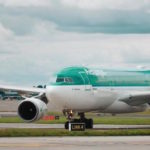
Aer Lingus, Air Canada and Latam CEOs Discuss IFEC Strategies
At Airline Passenger Experience (APEX) Expo 2018 in Boston last month, many airline Chief Executive Officers (CEOs) spoke to the importance of the connected aircraft, and the impact it has on their overall strategy. While they did not necessarily talk about satellite technology, it is clear that connectivity will be at the heart of the passenger experience, and satellite-based connectivity will have an increasing importance. One of the most talked about speakers in Boston was Claudia Sender, the CEO of Latam, and one of the few female CEOs of a major airline. She said that Latam was using advanced analytics to improve the customer experience. The airline has launched 60 new routes over the last two years. Sender admitted that the cabin experience is the main driver for customer satisfaction and a crucial factor for airline choice, so the airline has embarked on an extensive customer experience revamp. It is investing $400 million in cabin retrofits over the next three years. “We are looking to invest in a better In-Flight Entertainment (IFE) look and feel including 18-inch screens. “IFE is one of the most important things. It is essential that our customers have great content available. The new user interface will have a refreshed and harmonized look and feel,” said Sender. “It is important for us to have Wi-Fi on board. We are revamping the entire applications we have on board. There will be super-personalization of the customer experience.” Aer Lingus, Ireland’s national airline, is also at an interesting time as it looks to bring more connectivity to its passengers. The airline has been serving customers since 1936. Aer Lingus CEO Stephen Kavanagh said that the airline is planning on offering a free Wi-Fi product for those in the economy cabin, as the airline plans to modernize its brand. Wi-Fi will be at the heart of its plans going forward. “We are focusing on what our guests are telling us, and how the industry is reacting,” he said. “We will turn on 20 megabits of Wi-Fi in 2019 — that is alongside the brand refresh we are doing. We see now as a very appropriate time to do this. While Aer Lingus is getting set for a busy 2019 as it plans to bring connectivity to passengers, others are slightly more advanced in their plans. Aeromexico has long been a pioneer in bringing connectivity services to passengers, and even has a partnership with Netflix. Its CEO Andres Conesa said the airline had seen penetration increase three times in e-commerce over the last four years. The airline will continue to work hard to boost its connectivity options to passengers. American Airlines CEO Doug Parker said the airline now has satellite Wi-Fi on its planes, and described it “as a much better product” and gives them much more flexibility than a seatback. “This is a much better product. This allows people to stream Netflix, for example. This is definitely the future. My children never even watch their TV. That is what will happen on the airplanes. We have it now on a third of our aircraft. It is a night and day difference. It will have a whole different feel,” he said. Another North American airline, Air Canada, also outlined some of its plans in this area. Air Canada CEO Calin Rovinescu admitted that the airline is looking to push suppliers on the connectivity side. “We are not fully satisfied with what we are seeing on the streaming side, but, we are continuing to work with suppliers. Connectivity needs to work really well,” he said.











